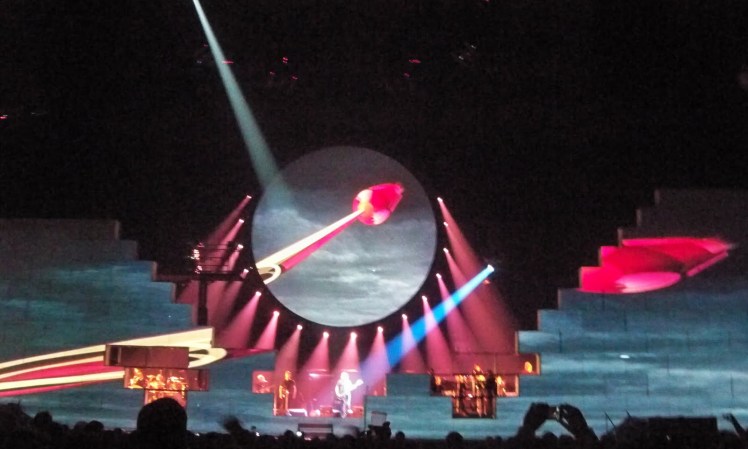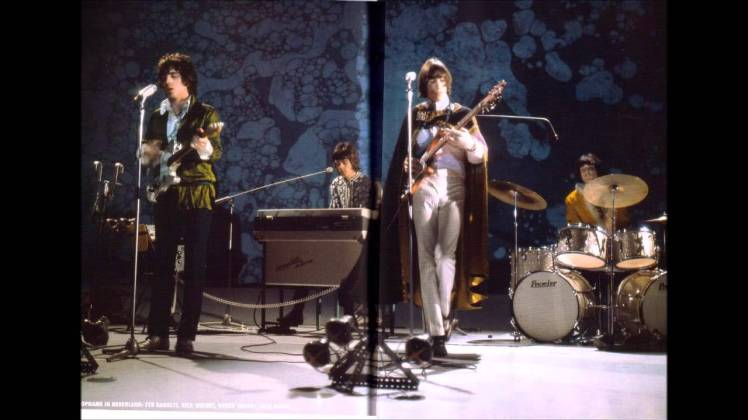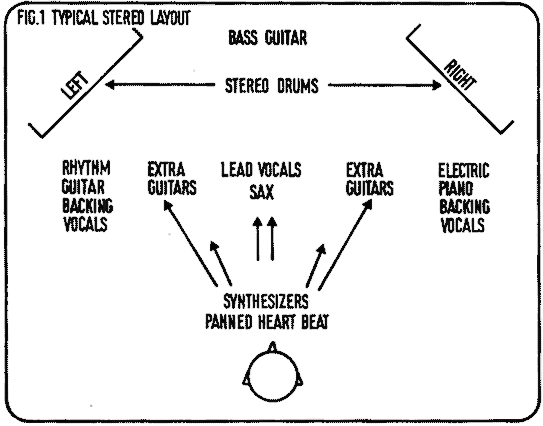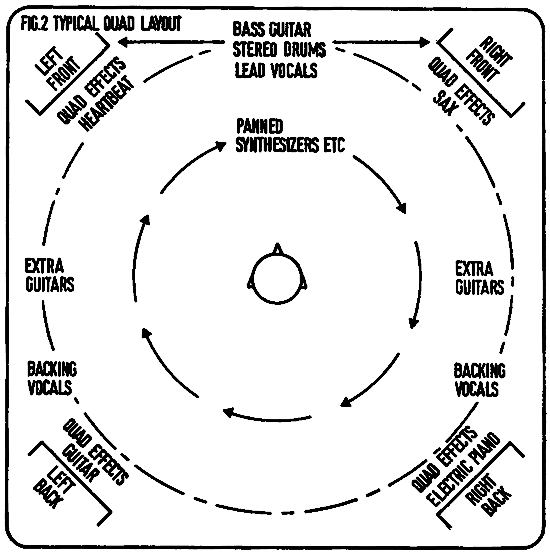
When I was 11 years old my dad introduced me to Pink Floyd, and I was completely blown away. It wasn’t like anything that was being played on the radio and I couldn’t get enough, I was in year 6 and had only heard ‘Dark Side of the Moon’ at that stage, but I was completely mesmerized.
My Mum and Dad had bought tickets to Roger Waters solo tour of DSOTM and on the night of he concert my Dad fell ill, and knowing how enthusiastic I was becoming of the album and band, Mum took me along instead. The show was at Rod Laver Arena and was one of the first concerts I had ever attended, and boy was I excited – not just with anticipation but also with the size and layout of the stadium. Waters played DSOTM from front to back, then after an intermission played another set of songs from a combination of albums. Everything about that concert blew me away – the musicianship, the quality of sound the front of house engineer was getting, the theatrics (lights, lasers, flying pigs), and from that day onwards they have been my favourite band, and I’ve continued to marvel at their live shows through DVD’s (they’re actually one of the reasons I decided to study audio production). Pink Floyd are known to have one of the best live shows in the world and the fact that Rogers Water’s “The Wall” tour is the highest grossing tour of all time by a solo artist reinforces that point.
I assumed that like most other bands, Pink Floyd would have built their live show as their careers progressed, however after some research into the bands history It has become apparent that the group have always been progressive thinkers, wanting to push the boundaries of their live performances, and were “frequently accompanied by strange film sequences which were projected onto the band along with liquid (coloured oil slide) movies…preferring to give audiences an experience that relied on this interaction of sound, light and atmosphere”. And this was in early 1967 before they had even released their first album.


The band soon begun to buy their own PA systems so that they were able to have the best live sound possible, and soon had the best sound system in the country. They then started to experiment with quadrophonic sound for their live concerts. Quadraphonic (or Quadrophonic and sometimes Quadrasonic) sound – similar to what is now called surround sound– uses four channels in which speakers are positioned at the four corners of the listening space, reproducing signals that are (wholly or in part) independent of one another.
Basically the band would set up PA systems in a square shape around the venue (they would eventually change to a diamond shape) so that they could immerse the audience in a 360 degree audio experience, with guitars, synthesizers and tape effects whizzing around the room. To do this the live sound crew used a device known as an Azimuth Coordinator which was a quad pan pot that allowed audio to be panned between up to 6 loudspeakers that would be placed around the hall. Pink Floyd were the first group to use the device for live performance.
 (Azimuth Coordinator)
(Azimuth Coordinator)


By the time the band begun to record their 8th studio album in 1973, ‘Dark side of the moon’ with Alan Parsons, they decided that their records should match their live performances, and recorded the album in quadrophonic. The album launched the band into mega-stardom and was in the charts for 741 weeks from 1973 to 1988, and has sold over 40 million copies worldwide. Due to this increase in fame (and money) the band were able to increase expenses for their live performances and began to be known as one of the best live acts in the world.
Due to the amount of effects used on DSOTM such as heartbeats, clocks, alarms etc. Alan Parsons recorded all the effects onto an EMI portable quarter-inch tape machine and later fed through the live quad mix. “We went back to the album multitrack tape to copy those clocks and other effects for the live shows, and played them through the quad system on a TEAC four-track deck” (Alan Parsons).

Late last year when Roger Waters released his live concert/movie of his 2013 tour of the Wall, my Dad and I went to the screening at the cinemas, and yet again I was filled with the same kind of excitement as when I’d gone to see him live at the age of 12. The thunderous, and crystal clear audio combined with the dazzling musicianship theatrics of their live shown is truly a sight to be seen, and that is part of the reason why I love Roger Waters, and Pink Floyd s much.
If you’d like to learn more feel free to read the articles listed below, which Is where I got my information from:
References:
http://testamorta20.angelfire.com/PFlive.html
http://www.quadraphonicquad.com/QQ-PFQ.htm